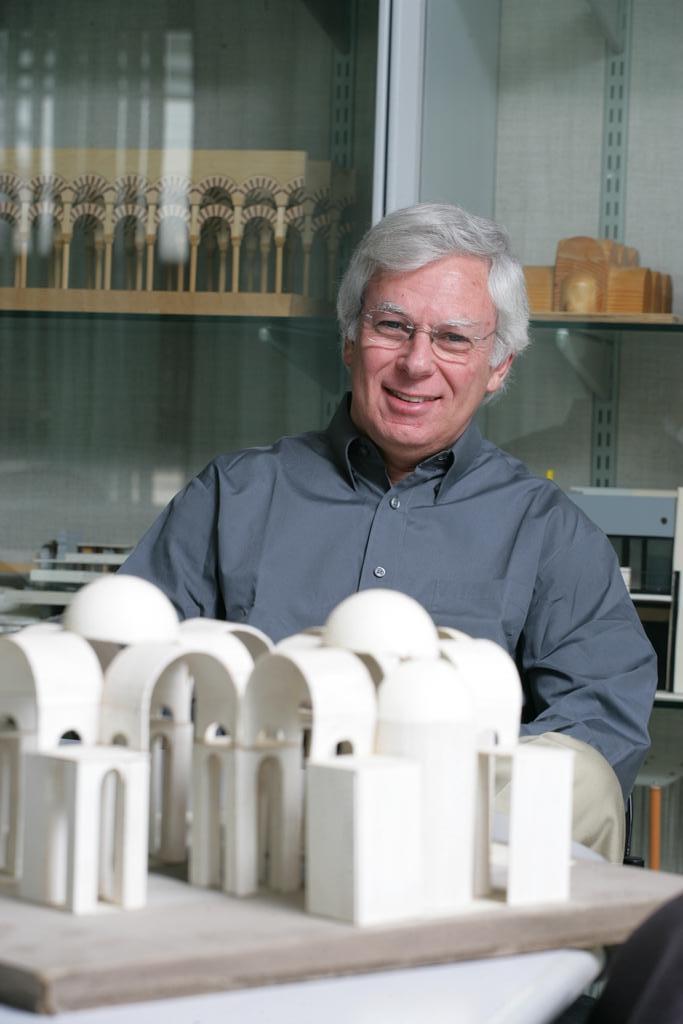Domus: Technion Architecture in Top 50
According to “Domus” – the Prestigious Magazine for Architecture, Art & Design:
Technion’s Faculty of Architecture & Town Planning Among the Top 50 in Europe
The Faculty of Architecture & Town Planning at the Technion has been listed among the top 50 best schools in Europe, according to the prestigious “Domus” magazine for architecture art and design; “Domus” was founded in 1928 in Italy and read in over one-hundred countries.
“People ask us ‘So who is number one?’ Albeit in surveys of this kind it is customary to see rankings in this manner but since this is a very difficult question to answer, it may not be possible to provide a quantitative answer,” as written in the magazine, where instead of ranking the 50 selected Faculties, it states which are in the top 50 best schools. “This is because over the past few years we have seen that collaborative networks among institutes of higher learning have evolved into something more intricate given the rise of neo-liberalism, unprecedented technological advances and economic globalization. These factors have expanded the networks of higher education beyond the physical and virtual limits of the schools themselves. These collaborative networks are vital because they equip students with the skills needed to communicate with other people, with technology, and with broad technological infrastructures that are non-hierarchical. These conditions have become even more important in light of the global financial crisis.”
“The new graduate cannot depend on a guaranteed career ladder; he/she must operate ‘within the current economic system,’ characterized by its casual labor contracts, its just-in-time production and more. Designers, architects, and other actors in the creative fields must be multidisciplinary, open to collaboration, and motivated to find and initiate these often amorphous work arrangements. Many designers work as freelancers or at several part-time jobs, while some find classic, stable jobs; still, even those who follow a stable career path have probably gained access via their connection to a networked individual or institution.”
“The new economic condition therefore demands a new educational condition. If schools can no longer train students for traditional careers, neither can they function like traditional schools. The schools of the future are ranked first and foremost through their collaborative networks, and only after by traditional criteria of strong professors and exceptional student work. Schools that excel in these criteria function as laboratories that come into contact with businesses, creative studios, cultural institutions, research groups and other schools.”
On the Technion, the magazine wrote the following:
“Technion – Israel Institute of Technology is Israel’s oldest architectural school. Many of the most prominent Israeli architects attended the school and teach there today. Technion students learn to engage with the urban structure of the site and the broader context of the city. The program emphasizes building and spatial layout and design. The focus and strength of the program is in its physical engagement between architecture and the city.”
“They have recently updated the school with new labs, extensive digital technologies, and plan further renovations. The school has guided the formation of robust personal and professional networks. The strength of the school is the students, as there is a rigorous admissions process. Students are helpful to each other and not hyper-competitive; they describe the Technion as a positive atmosphere for studying, with good personal and professional relationships with teachers. Visiting professors bring in further knowledge and networks from Israel and abroad. These encounters provide opportunities to make connections for collaboration and future employment.”
“The city of Haifa has many engineering schools, forming a strong technical knowledge base. Students call the city a good place to study and focus. Haifa is on the coast, providing a lively atmosphere in the summer. The facilities are good, open 24 hours, and include small studios and workshops for wood, metal and plastic. There is also a digital design lab with two lasercutters, two 3D printers, and a CNC machine. A new visualization lab houses a 9 meter screen, with three synchronized projectors that provide immersive, 3-dimentional visualization. The library is the best in Israel.”
“The school has a wealth of research labs, including the Climate and Energy Lab, the Visualization Center, the Center for Architectural Research and Development, the Architectural Heritage Research Center, the PeKA Gallery of Experimental Art and Architecture, and the Center for Urban and Regional Studies. This enhances the studies and capabilities for all students. The website for the school could be better; an improvement would help students showcase their work and present the school to an international audience.”
Prominent Alumni:
- Zvi Hecker,
- Yaacov Rechter,
- Dan Eitan,
- Avraham Wachman,
- Michael Burt,
- Moshe Zur.



